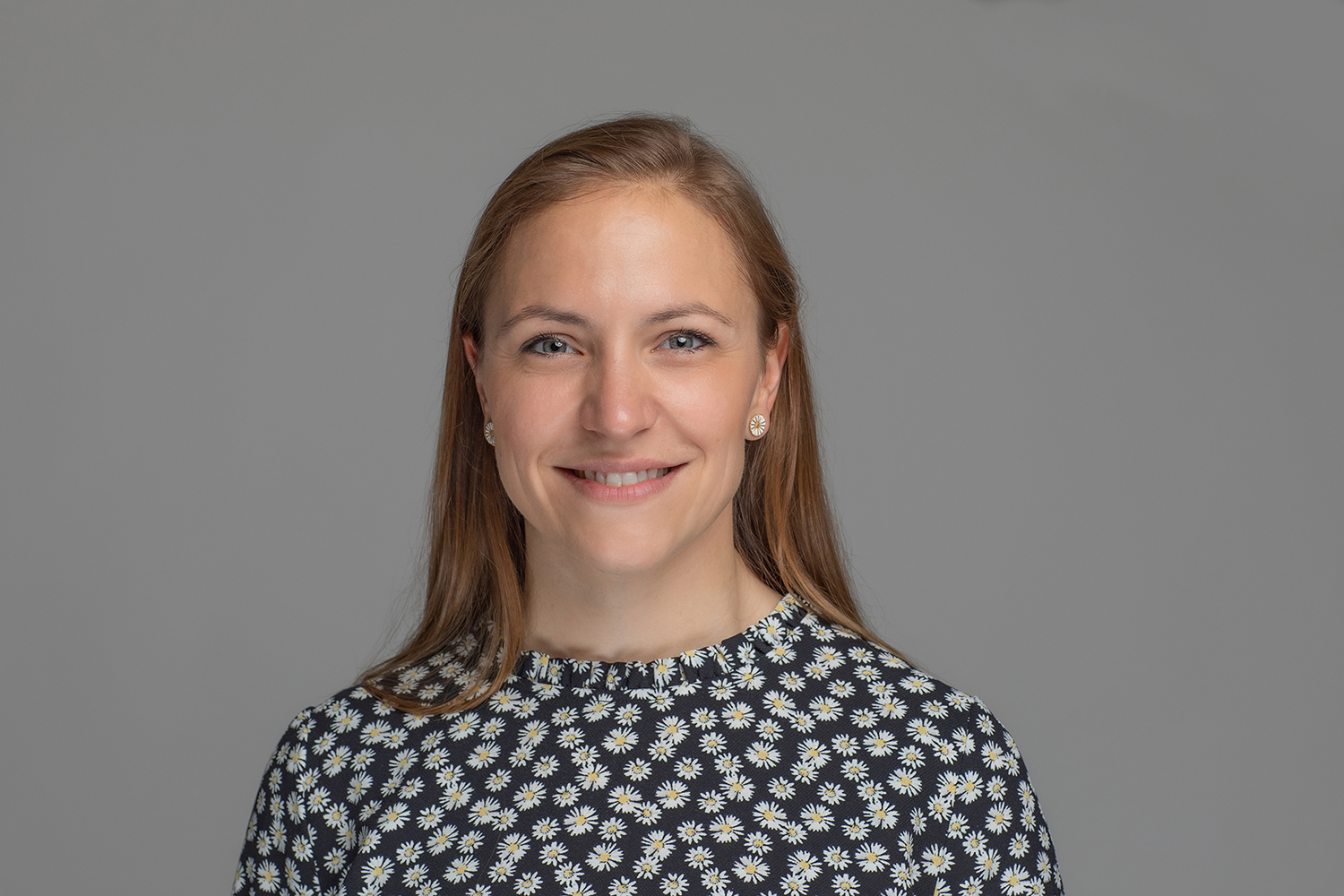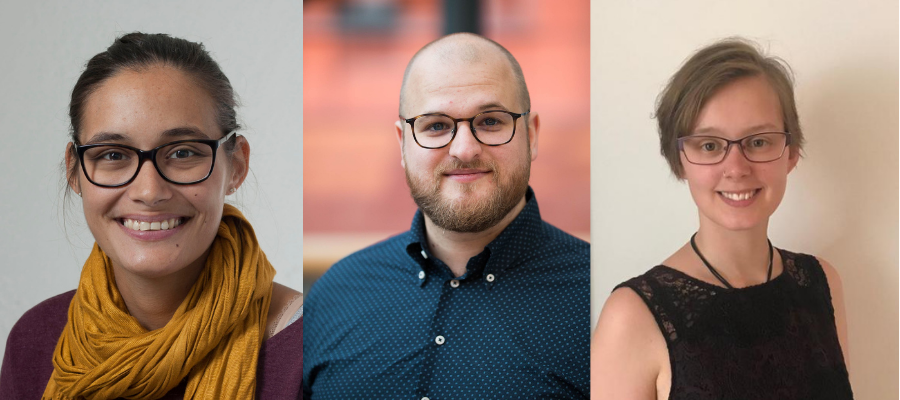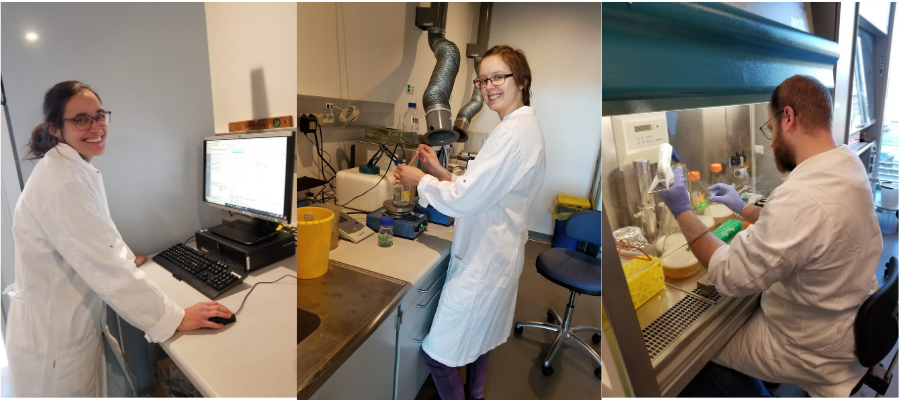Feature Interview: Henriette Elisabeth Autzen
Henriette Elisabeth Autzen is one of the newest members of ISBUC. In February 2020, Henriette was recruited as an Associate Professor in Biomolecular Sciences at the Department of Biology, UCPH, establishing her own lab and teaching courses in biochemistry and biophysics at the department. Soon thereafter, Henriette received the Hallas Møller Emerging Investigator Grant in BioScience and Basic Biomedicine from the Novo Nordisk Foundation. Henriette’s research centers around understanding the molecular mechanism of taste using single-particle cryo-electron microscopy (cryo-EM). Part of her work is also the development of new polymers used for sample preparation of membrane proteins. (Interview by Sabine Kayser)

Tell me about what you have been up to since your arrival at UCPH in February 2020? Starting and setting up your lab during a pandemic must have been quite a ride?
Definitely. A lot of work went into teaching courses, preparing my lab space and recruiting personnel. Setting up a lab during a pandemic is… well, let’s say, I wouldn’t recommend it. Buying equipment, coordinating with people to set it up, and a lot of other practical tasks were challenging with the restrictions in the spring. Fortunately, the Section for Biomolecular Sciences is very welcoming, friendly and supportive, and I have gotten a lot of good advice from the other PIs, especially from Kaare Teilum, Birthe Brandt Kragelund, Kresten Lindorff-Larsen and Jakob R. Winther and other colleagues in the section.
I really look forward to work on collaborative projects with my colleagues in the section, who already work across labs. We cover a broad spectrum of complementary methods and techniques, and since I am the only person in the section working with cryo-EM, I hope that I will be able to start up or contribute to existing collaborations.
Because of the coronavirus, waiting times for lab equipment have been longer than usual, but things have picked up in the last couple of months since my two postdocs, Milena Timcenko and Casper de Lichtenberg started in October and December 2020, and my research assistant, Matilde Knapkøien Nordentoft, started in January 2021. So far, we have purified a few proteases, made competent cells and established other fundamental protocols for the lab to run smoothly. We just finished setting up the mammalian tissue culture room, so we can express mammalian proteins as well.

And, there is teaching courses offered by the section of course. Teaching has also taken up a good chunk of my time.
How did you become interested in researching proteins involved in taste perception? What is it you are looking for when working with them?
During my postdoc at the University of California, San Francisco (UCSF), I was working on an ion channel my supervisor, Yifan Cheng, was very interested in: TRPM4 (transient receptor potential melastatin 4). In parallel, I was also working on TRPM5, a close homologue to TRPM4. However, while TRPM4 is found throughout our bodies, TRPM5 is largely expressed in our oral cavity and gastrointestinal tract and has been connected with diabetes, overweight, our regulation of appetite and perception of taste.
Before diving into the subject, I thought it was very much figured out how taste works: we have five taste modalities: sweet, umami, bitter, salty, and sour with specific proteins responsible for eliciting the signaling. However, the more I read about the subject, the more I realized that we have a lot to learn about the proteins involved in taste, proteins which are both situated upstream and downstream of TRPM5. Looking at the literature, it is known which receptors are responsible for different taste modalities, but the underlying molecular mechanisms involved in how they respond to different taste signals and how they convey their message is unknown.
From a medical perspective, the perception of taste is closely connected to the sensation of hunger, to weight gain or loss, or to metabolic disorders. It likely also influences how the gastrointestinal system responds, and I think research in this direction could have significant impact.
Where will this research take you in the coming years? What are your plans?
Taste is species specific, meaning that different species perceive flavors differently, because the proteins change with the diet. Even in humans, we can see that taste compounds are perceived very differently depending on cultural differences in diet, for example between Scandinavia or Asia. This translates into which receptors are expressed and where they are expressed. I find these patterns intriguing, and I aim to study taste receptors in a broader perspective. For instance, what are the proteins that help us perceive taste in our tongues doing in our gastrointestinal tract or sperm cells?
Part of your research is the development of polymers for the preparation of proteins instead of the more traditional method of using detergents. What is it exactly you are working on?
The polymer I started out using has been around for a decade or so. It is an industry polymer, with limited control of certain characteristics. During my postdoc at UCSF, I started collaborating with my husband, Anton A. A. Smith, a very skilled polymer chemist. We wanted to make and employ the industry polymer in a different way with a better control of its chemical characteristics, hopefully leading to a far better sample than the five-dollar industry polymer used in the paper industry or plastics.
We then started thinking about how to improve the polymer further and looking into new designs. We landed on a new polymer with a much more controlled chemical composition and structure than the industry polymer. According to our studies, our polymer is a better product for its intended purpose.
This sounds like in the future a lot of wet work could benefit from the polymers you are developing. Are there any obstacles that you need to still overcome when you work on new polymers and how could ISBUC be beneficial in this process?
Unfortunately, our polymer is not optimal yet. It is negatively charged which makes it challenging to work with, leading to suboptimal protein purification yields, which is undesirable for targets you might not have high amounts of to start with. We are therefore designing neutral polymers that work just as well as our negatively charged polymer.
We are looking into using our polymer on other targets, lipid compositions, and protein sizes, and for this we hope to establish collaborations with people specializing in different targets from different organisms and/or cells. We want to concatenate data and find out which polymer is going to work well with which type of protein or cell type. The end result could be a polymer library where one—say—number 3 is really good for plants and this size protein, while number 5 is really good for blood cell proteins and another size protein, and so on.
I am mainly working on this with my husband and a few collaborators abroad, but I have also been talking with ISBUC member Søren G. F. Rasmussen, who played a significant part in developing some of the most utilized detergents for extraction of membrane proteins. Søren has an excellent platform for testing our polymers just like he tested detergents in the past. My hope is that other people at ISBUC working on membrane proteins would be interested in testing our polymers as well.

When you imagine that you are a student, Bachelor’s or Master’s, or PhD, thinking about entering the field of structural biology, what advice would you give to our Junior ISBUC members?
That is a tough question! As structural biology includes such a wide range of different methods, my advice would be that you should not be afraid to shift your focus from one method to another because the insights you gain from different fields are going to be complimentary. In my own experience, doing a Bachelor’s and Master’s in molecular modelling and then moving on to crystallization in my PhD and then cryo-EM in my postdoc, has given me a really good set of tools in terms of understanding structural biology from many different perspectives.
Especially going from PhD to postdoc, I think you need to make sure that you specialize in something else. In terms of a Bachelor’s and Master’s student, whatever project you end up working on is not going to lock you in. A main part of it is learning how to employ the scientific method.
When did you learn about ISBUC and what do you think of it?
Birthe Brandt Kragelund mentioned it to me and then I looked it up on the ISBUC website. Just before lock-down in early March 2020, I was fortunate to participate in an ISBUC strategy meeting which was a good opportunity to meet some of the people I had seen on the website. I hope to meet the rest at future ISBUC events when we are on the other side of the pandemic. It was cool to see what sort of activities were going on at ISBUC, and what the different PIs were expecting to gain from the network. Being new at UCPH, I really want to initiate new collaborations and share resources, and I think ISBUC will be a great opportunity for this. I also like how engaged the junior ISBUC network is.
Finally, with your research focusing on taste receptors, do you have a favorite food that gets your taste buds to tingle?
Oh yes! Having lived in California for four years, it is definitely tacos. That is my favorite. Tempura shrimp tacos. I miss them so much!
